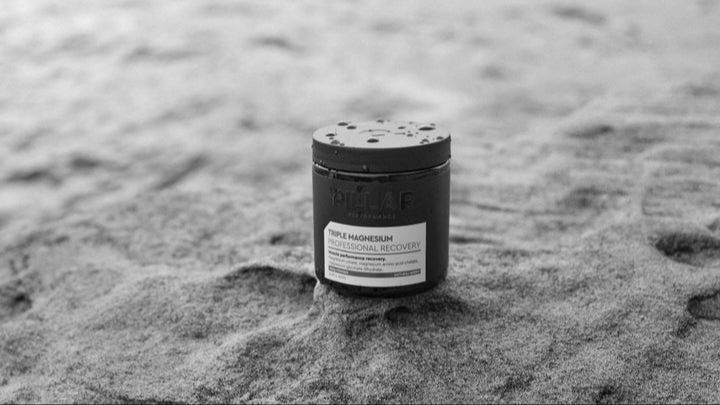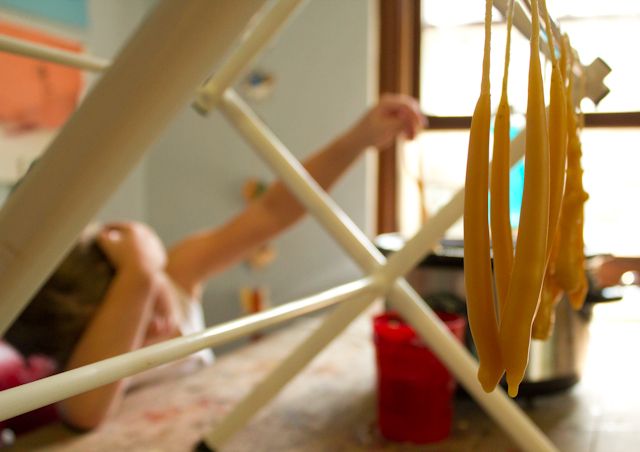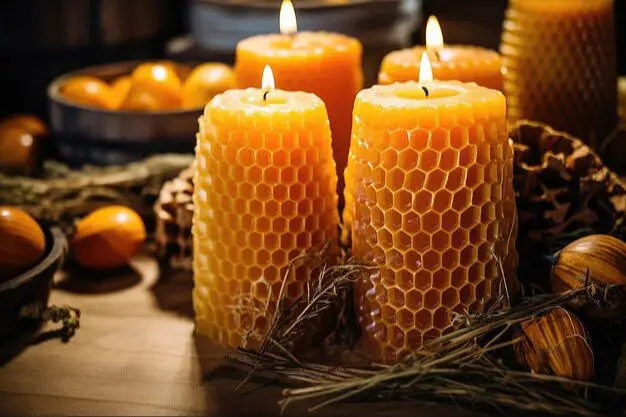What Makes Trick Candles Work?
Trick candles are a novelty type of candle that seems to relight themselves after being blown out. They are designed to “trick” the birthday person into thinking the candles have relit themselves.[1] While regular birthday candles go out when you blow them out, trick candles use specialized materials and designs so that the flame comes back after it has been extinguished. The mechanism behind this trick involves the candle wick and how it interacts with melted wax in order to reignite.
When you blow out a normal candle, the wick stops burning and goes out. With trick candles, the wick is coated in substances that allow it to stay lit at low temperatures or reignite itself using residual heat in the melted wax. The wick is constructed and arranged in a way that allows hot wax to flow back over it after you blow, which reignites the flame. So while it seems like magic, there is some clever chemistry and engineering involved to make trick candles work.
Wick Design
The wick is one of the key components that allows trick candles to relight after being blown out. While regular candle wicks are made of simple cotton or paper fibers, trick candle wicks contain additional materials that enable them to reignite.
Trick candle wicks are often made from cotton fibers that have been coated in a flammable substance like gunpowder or kerosene, according to DIY expert Grant Thompson of The King of Random YouTube channel. This flammable coating allows the wick to stay lit at a lower temperature.
Some trick candle wicks also contain multiple braided or twisted strands of material so that part of the wick stays above the melted wax after blowing it out. This exposed portion can reignite more easily when the candle is blown on again. The multiple wick strands provide more surface area for igniting and staying lit.
By engineering the wick differently than regular candles, trick candles are designed to resist going out completely even after the flame has been extinguished by blowing. The modified wick is key to the relighting magic.
Wick Coating
The key ingredient that allows trick candles to re-light after being blown out is a coating applied to the wick. This coating is typically made from magnesium powder, a highly reactive metal when in powdered form (https://cen.acs.org/articles/88/i32/Trick-Candles.html). When the candle is lit, the magnesium coating burns at a very high temperature, high enough to vaporize itself. This vaporized magnesium then ignites, relighting the wick even after the candle has been blown out.

The magnesium powder coating essentially acts as an additional fuel source for the wick. Even when the wax fuel is blown out, the magnesium vapor provides enough heat to reignite the wick as soon as more oxygen becomes available. This rapid reignition after blowing out the flame is what creates the “trick” effect.
Some manufacturers may also incorporate other metals like aluminum into their wick coatings, but magnesium is the most common. The coating is usually applied via a process of dipping the wicks into a mixture containing the metal powders (https://candles-soap.wonderhowto.com/news/make-magic-trick-candles-0113031/). This allows the powder to thoroughly permeate the wick and provide enough fuel to create the trick relighting effect.
Ignition Temperature
Trick candles contain magnesium in the wick, which has an extremely low ignition temperature between 800-900°F (430-480°C).1 This allows the wick to re-ignite even after it has been blown out, because the ember retains enough heat to cause the magnesium to ignite again.2
When you blow out a normal candle, the wick cools below the ignition point of the wax and stays out. But with trick candles, the magnesium requires much less heat to ignite. So even when blown out, the hot ember in the wick is still above the ignition temperature of magnesium, causing the flame to re-light. This cycle repeats, making the trick candles seem impossible to extinguish.
Fuel Load
The fuel load in a trick candle refers to the amount of paraffin wax and other flammable materials present. According to HowStuffWorks, trick candles contain a larger fuel load than regular candles, with extra paraffin wax packed into the wick. This increased amount of flammable material is what allows the flame to reignite after being blown out.
When you blow out a regular candle, there is not enough residual heat or paraffin vapor to re-ignite the wick. However, with a trick candle, the excess paraffin in the wick remains heated and continues vaporizing after the flame is blown out. This vaporized fuel reignites when it comes into contact with oxygen in the air and the small amount of heat remaining in the wick. The larger the fuel load, the bigger the resulting flame can grow as more paraffin is vaporized to sustain combustion.

Oxygen Access
Trick candles are designed to allow oxygen to reach the wick and enable re-ignition after being blown out. When you blow out a regular candle, the wax pool seals off the wick from oxygen, preventing the candle from relighting. Trick candles have channels within the wax that allow airflow to the wick even after blowing out the flame. Some designs incorporate metal fibers into the wick that separate when blown on, exposing more wick surface to oxygen. Others use wax formulations that don’t completely seal off the wick when blown out. As the wick’s temperature drops after the initial flame is extinguished, the wax solidifies leaving small gaps for air to pass through. This continued airflow allows the wick to reignite shortly after being blown out.
One way to prevent a trick candle from relighting is to seal it off from oxygen completely, like by submerging it in water. This blocks access to oxygen and stops the relight effect. The other option is to let it fully burn through its extra fuel load so there is no wax left to melt and expose the wick. With no wax pool to provide fuel, it will burn out like a normal candle.
Flame Retardants
Trick candles contain flame retardants to limit the burn time and prevent the candle from burning down completely. These retardants are added to the wax or wick coating to inhibit full combustion. According to the American Chemical Society (ACS), trick candles often use brominated flame retardants like tetrabromobisphenol A (TBBPA) in the wax and wick (https://pubsapp.acs.org/cen/science/88/8832sci2.html). The bromine in these retardants captures free radicals produced during combustion, disrupting the full burn process. Other common flame retardants used are antimony oxide and aluminum hydroxide. These inorganic compounds endothermically decompose at high temperatures, cooling the material and slowing down combustion.
Manufacturing Process
The manufacturing process for trick candles involves a few key steps to incorporate the magnesium in the wick and allow the candle to relight after being blown out. Here is a summary of the main stages of trick candle production:
Wick preparation – The wick is coated in a mixture containing powdered magnesium metal before being assembled into the candle. The magnesium enables the relighting property.
Candle assembly – The wick is inserted into melted wax and the candle is formed through dipping, pouring or molding techniques. Soy, paraffin or beeswax are commonly used.

Wick trimming – The wick is trimmed to an optimal height for burning once the candle is cooled and hardened.
Testing and packaging – The finished candles are tested to ensure proper relighting functionality before being packaged and shipped to consumers.
The magnesium-coated wick is the key element that distinguishes trick candles from regular candles. With the right wick preparation and candle design, the special relighting effect can be achieved through a relatively straightforward candle-making process.
Common Brands
Some of the most popular brands that make trick candles include:1
- Yankee Candle – An iconic American candle brand known for their wide variety of scented candles, including trick candles like the Wacky Birthday Candles.
- Magic Candle Company – Specializes in trick candles like the Banshee Flight candle and other novelty candles.
- Colonial Candle – Sells the “Trickster Candle” and other trick candle varieties under their novelty candles collection.
- Candle-Lite – Manufactures trick candles like their “Trick ‘n Treat Candles” line of multi-wick candles.
- Lumine Lighting – Known for their refillable trick candles, including the Relightable Trick Candle.
Other major candle brands like Bath & Body Works, WoodWick Candles, and Village Candles also offer some trick candle options among their regular candle lines.2
Uses
Trick candles are often used to add fun and surprise to birthday cakes and celebrations. The relighting effect makes blowing out the candles challenging and entertaining. Some common uses and occasions for trick candles include:
Birthday cakes – Trick candles are a birthday tradition and are commonly placed on top of cakes and cupcakes. The birthday person tries to blow them out, only to have them relight, much to the amusement of party guests.
Kids’ parties – Trick candles are popular at kids’ birthday parties and add an element of magic and delight. Children enjoy the spectacle of the candles relighting.

Adult birthday parties – While especially common for kids, trick candles can be used at adult birthday parties as well for humor and amusement.
Weddings – Some couples incorporate trick candles into their wedding cake as a source of entertainment for guests.
Special occasions – Trick candles may also make appearances at events like retirement parties, graduations, anniversaries, etc. Their novelty makes them suitable for all sorts of celebrations.
Pranks and jokes – The re-lighting ability of trick candles also makes them popular for pranks and jokes played on unsuspecting friends and family.





